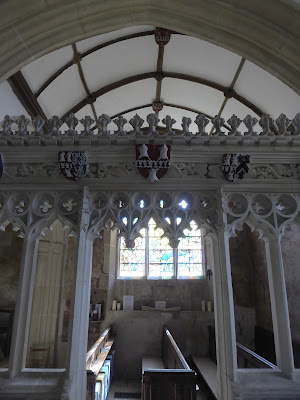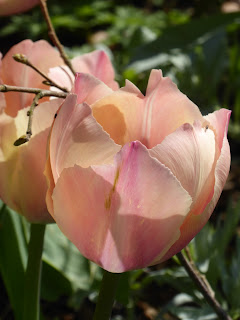But first off lunch in the nearby Pear Tree gastropub. This was a perfect choice for lunch, although just a bit too chilly to take advantage of the tables outside.
The Manor itself is approached by a country lane. No real parking spot either - cars just back down the verge in front.
The gardens/grounds are especially attractive this time of year with the Spring bulbs.Although evidently there are riches later in the year too, notably the rose garden. But we liked this very much, and impressed that they only have one full-time gardener to keep it looking so pristine.
The little church has charm of its own, although it predates the house. Its difficult to believe that its congregation wasn't primarily workers from the big house.
Unfortunately, one wasn't allowed to take photos of the interior, although having said that, since the interior could only be entered a start of a (very good) guided tour, and the tours were very well subscribed, any photos would inevitably have been largely of other tourists gawping.
the house had an interesting history. It was built as proper fortified manor. At the time one might expect trouble as a well-off land owner. But it ended up in a pretty ruinous state as it descended from the home of landed gentry to lodgings for local farmers. But Pugin took a shine to it and interested one Victorian enough for him to renovate the semi-derelict buildings to form a comfortable, if rather cold, house, with its main hall and "squints" - stone masks which hid peep=hols from which the goings on the hall could be monitored from adjoining rooms upstairs.























































No comments:
Post a Comment